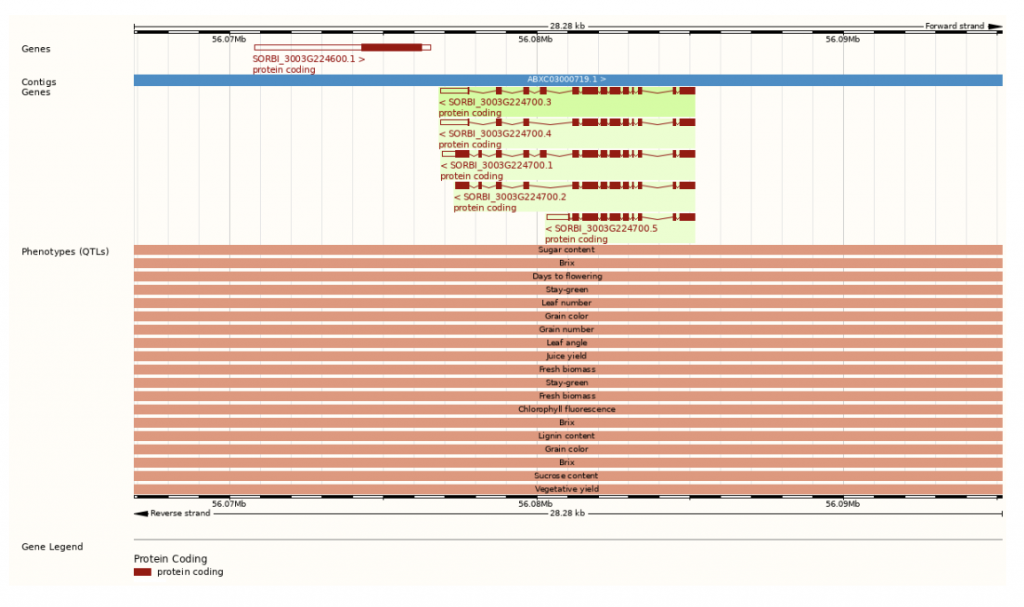Researchers in Ethiopia Map QTLs for Stem Sugar and Stem Diameter in Sorghum
Sorghum is one of the top five most important cereal crops globally. It is mostly grown in semi-arid regions under water stress conditions, where it is highly resistant to biotic and abiotic stress. There has been much research focused on the genetics behind the ability of some sorghum varieties to grow under these adverse conditions. However, there is also a need to research genetic improvement of traits that do not necessarily impart stress resistance but improve specific crop qualities, like stem sugar content. Sugary sorghum stems are used for syrup, fodder, and biofuel and improving this characteristic is of great interest to breeders and those in the biofuel industry.
In order to research the genetics and environmental effects behind stem sugar and biomass (stem diameter) in sorghum plants, scientists in Ethiopia at the National Agricultural Biotechnology Research Center, Salale University, and Addis Ababa University used genotyping-by-sequencing (GBS) to map quantitative trait loci (QTLs) from grain and sweet sorghum recombinant inbred lines (RILs), targeting not only crops grown in the rainy environment, but also the dry off-season. The researchers showed that leaf midrib color and stem diameter were the most important indicators of stem sugar content. In addition, panicle number, panicle size and thousand seed weight were positively correlated with grain yield. Using phenotypic data, they identified QTLs for average sugar content (oBrix) and stem diameter under both the favorable rainy environmental conditions and the unfavorable dry off-season conditions. The QTL were more stable across both seasons for oBrix content than stem diameter. The study’s quantitative data supported the fact that stem diameter is critically associated with Brix percent and supports the importance of mapping QTLs for this trait in regulating sugar content. The mapping of QTLs for oBrix and stem diameter in this study can be used to help create cultivars with superior sugar content.
SorghumBase example:

Reference:
Takele A, Feyissa T, Disasa T. Quantitative trait loci mapping of stem sugar content and stem diameter in sorghum recombinant inbred lines using genotyping-by-sequencing. Mol Biol Rep. 2022 Apr;49(4):3045-3054. PMID: 35076849. DOI: 10.1007/s11033-022-07131-8 Read more
Related Project Websites:
Ethiopian Institute of Agricultural Research: http://www.eiar.gov.et/index.php/en

